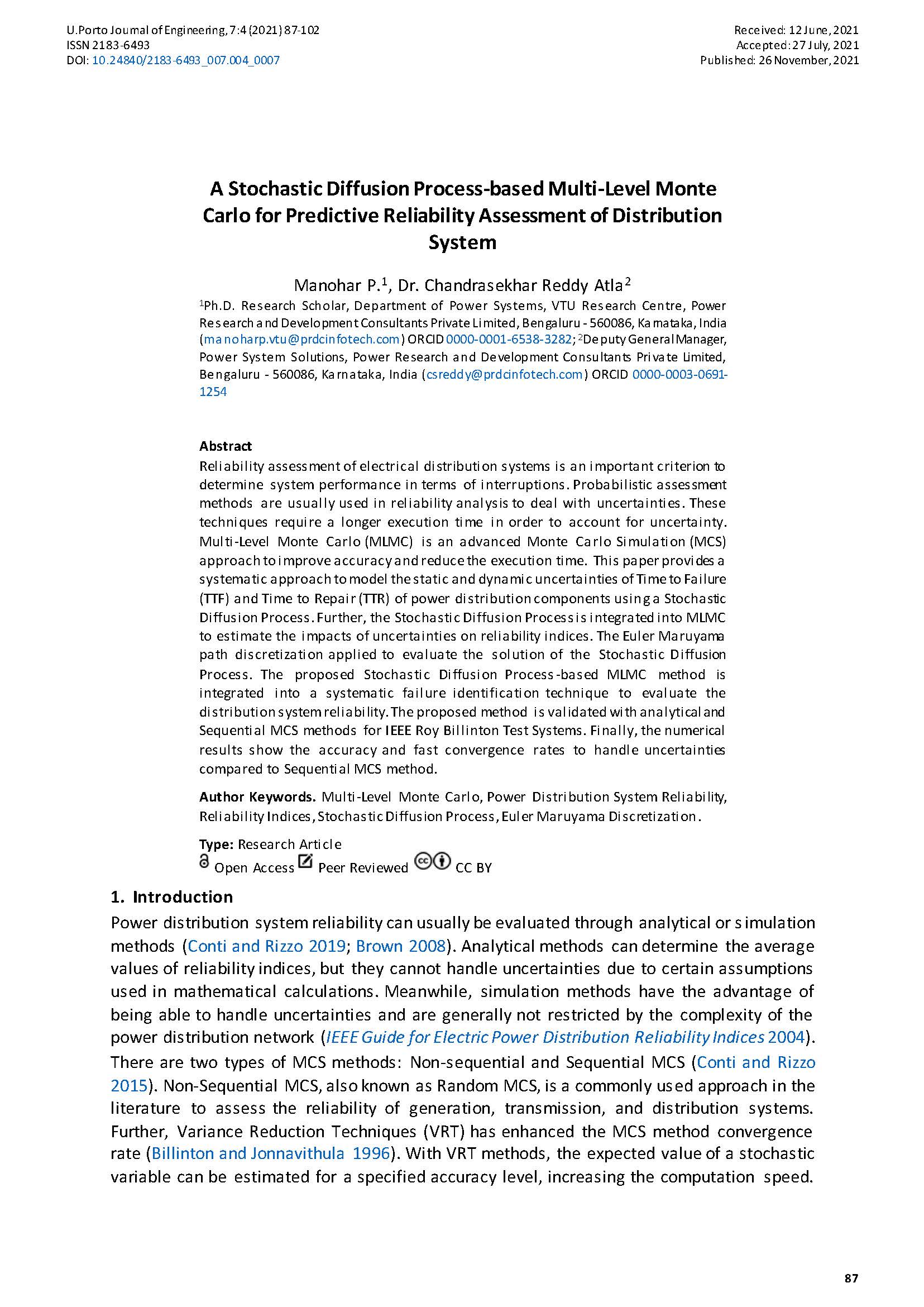A Stochastic Diffusion Process-based Multi-Level Monte Carlo for Predictive Reliability Assessment of Distribution System
Main Article Content
Abstract
Reliability assessment of electrical distribution systems is an important criterion to determine system performance in terms of interruptions. Probabilistic assessment methods are usually used in reliability analysis to deal with uncertainties. These techniques require a longer execution time in order to account for uncertainty. Multi-Level Monte Carlo (MLMC) is an advanced Monte Carlo Simulation (MCS) approach to improve accuracy and reduce the execution time. This paper provides a systematic approach to model the static and dynamic uncertainties of Time to Failure (TTF) and Time to Repair (TTR) of power distribution components using a Stochastic Diffusion Process. Further, the Stochastic Diffusion Process is integrated into MLMC to estimate the impacts of uncertainties on reliability indices. The Euler Maruyama path discretization applied to evaluate the solution of the Stochastic Diffusion Process. The proposed Stochastic Diffusion Process-based MLMC method is integrated into a systematic failure identification technique to evaluate the distribution system reliability. The proposed method is validated with analytical and Sequential MCS methods for IEEE Roy Billinton Test Systems. Finally, the numerical results show the accuracy and fast convergence rates to handle uncertainties compared to Sequential MCS method.
Downloads
Article Details

This work is licensed under a Creative Commons Attribution 4.0 International License.
Authors who publish with this journal agree to the following terms:
- Authors retain copyright and grant the journal right of first publication with the work simultaneously licensed under a Creative Commons Attribution License that allows others to share the work with an acknowledgement of the work's authorship and initial publication in this journal.
- Authors grant the journal the rights to provide the article in all forms and media so the article can be used on the latest technology even after publication and ensure its long-term preservation.
- Authors are able to enter into separate, additional contractual arrangements for the non-exclusive distribution of the journal's published version of the work (e.g., post it to an institutional repository or publish it in a book), with an acknowledgement of its initial publication in this journal.
- Authors are permitted and encouraged to post their work online (e.g., in institutional repositories or on their website) prior to and during the submission process, as it can lead to productive exchanges, as well as earlier and greater citation of published work (See The Effect of Open Access).

